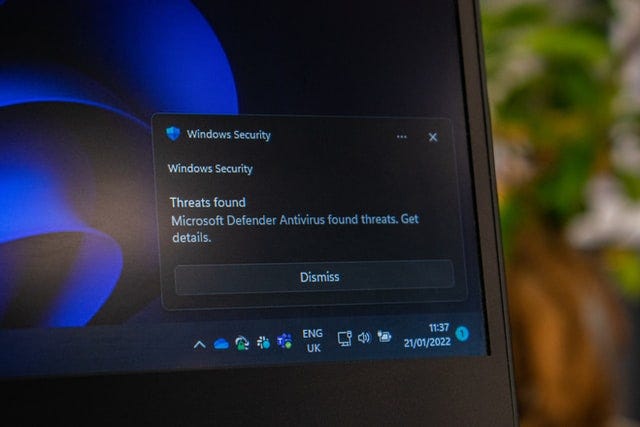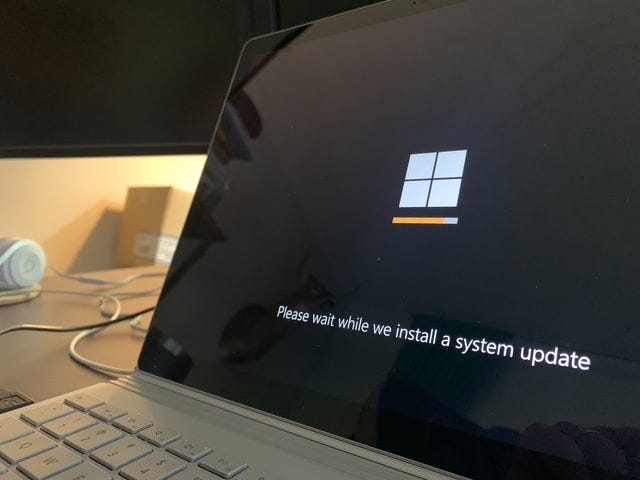18 Ways to Protect Yourself from Hackers
A detailed guide for non-technical people
Welcome to +165 subscribers who have joined the FREE HardwareSavvy newsletter this month and the dozens who have joined the PAID newsletter.
If you’re reading this but haven’t subscribed, join the HardwareSavvy community of +18,603 smart, savvy and fun people. Get access to hundreds of videos like this in the Android Academy at 20% OFF for a limited time.
Hello Savvies. I am a strong believer that tech does not have to be difficult, especially the topic of privacy and security. This is why I present you with a definitive security guide for non-technical people. It is broken down into 18 easy-to-digest parts. By the end of it, you will have a clear understanding of what is hacking, how your security could be compromised and how to protect it 18 different ways.
Quick points
Hackers are criminals who gain unauthorized access to a network and devices, usually with the intent to steal sensitive data, such as financial information or company secrets.
You can protect your computers by using firewalls and antivirus software and by following best practices for computer use.
You can protect your mobile devices by turning off Bluetooth when it’s not in use, being mindful of the Wi-Fi networks you connect to and using security applications to improve monitoring and protection.
How did hacking come about?
The growth of the World Wide Web in the 1990s introduced new possibilities and spawned new industries, but it also brought about new downsides of connectivity. Tons of spam started to infiltrate email accounts, and computer viruses wreaked havoc on business networks.
A new threat known as computer hacking extended the definition of thievery to include infiltrating your computer, stealing personal information, tricking you into revealing private data, and using that data to steal and extort personal information, such as business secrets, bank account credentials and even people’s identities.
What are computer hackers?
Computer hackers are people who break into internet-connected devices such as computers, tablets and smartphones, usually with the intent to steal, change or delete information.
Just as other thieves have malicious intent, hackers usually find their way into devices for negative purposes. (However, one exception is so-called white hat hackers, whom companies hire to break into their devices to find security flaws that need to be fixed.) Hackers may want to steal, alter or delete information in your devices, and they often do so by installing malware (software used for malicious purposes) you might not even know is there. These thieves might get access to your most precious data before you’re aware of a break-in.
Key takeaway: Hackers are interested in gaining unauthorized access to your devices to steal sensitive data.
Types of hacking
Here are some of the reasons computer hackers break into devices:
Financial crimes. We’ve all heard the classic story of somebody checking their credit card statement, only to find transactions they didn’t make. These false transactions are often the result of computer hackers stealing your credit card numbers, checking account info or gaining access to other financial data.
Vandalism. Hacking has its own subculture, so some hackers may want to vandalize certain websites just to show off to other hackers. Does it sound ridiculous? Don’t make the mistake of not taking this motivation seriously; it’s fairly common, according to Malwarebytes.
Hacktivism. This portmanteau describes a form of hacking somewhat like vandalism. Some hackers may want to alter or destroy certain websites for politically motivated reasons.
Corporate espionage. Spying existed long before the internet era, and hacking has only made espionage more accessible to the everyday person. With much of the world constantly connected to the internet, one company can hack into other companies’ devices to steal their information and use it to build an unfair competitive advantage.
Key takeaway: Hackers have a variety of motivations, ranging from financial gain to political goals. Awareness of these intentions can help you anticipate attacks that could affect your small business.
How to secure your computer from hackers
Despite the prevalence of computer hackers, most businesses rely on the internet to track their financials, order and maintain inventory, conduct marketing and PR campaigns, connect with customers, engage in social media, and perform other critical operations. Yet we continue to hear about massive computer breaches, even at giant corporations with robust security measures in place.
Small businesses are often targeted as well, especially because they may underestimate the risk of cybercrime and may not have the resources to employ expensive cybersecurity solutions. Follow these tips to protect your devices and safeguard your sensitive data:
1. Use a firewall
Windows and macOS have built-in firewalls – software designed to create a barrier between your information and the outside world. Firewalls prevent unauthorized access to your business network and alert you to any intrusion attempts.
Make sure the firewall is enabled before you go online. You can also purchase a hardware firewall from companies such as Cisco, Sophos or Fortinet, depending on your broadband router, which also has a built-in firewall that protects your network. If you have a larger business, you can purchase an additional business networking firewall.
2. Install antivirus software
Computer viruses and malware are everywhere. Antivirus programs such as Bitdefender, Panda Free Antivirus, Malwarebytes and Avast protect your computer against unauthorized code or software that may threaten your operating system. Viruses may have easy-to-spot effects – for example, they might slow your computer or delete key files – or they may be less conspicuous.
Antivirus software plays a major role in protecting your system by detecting real-time threats to ensure your data is safe. Some advanced antivirus programs provide automatic updates, further protecting your machine from the new viruses that emerge every day. After you install an antivirus program, don’t forget to use it. Run or schedule regular virus scans to keep your computer virus-free.
I would like to stress that I do not recommend a specific brand over another. The built-in Windows Defender does a pretty decent job of protecting you. In my experience, these paid antiviruses add a tremendous amount of bulk to your system alongside a plethora of unnecessary tools that claim to “speed up your system”, “check for malicious sites”, “optimize your apps” etc.
3. Install an anti-spyware package
Spyware is a special kind of software that secretly monitors and collects personal or organizational information. It is designed to be hard to detect and difficult to remove and tends to deliver unwanted ads or search results that are intended to direct you to certain (often malicious) websites.
Some spyware records every keystroke to gain access to passwords and other financial information. Anti-spyware concentrates exclusively on this threat, but it is often included in major antivirus packages, like those from Webroot, McAfee and Norton. Anti-spyware packages provide real-time protection by scanning all incoming information and blocking threats. I do not recommend any brand in particular. Please do your own research to determine which anti-spyware software suits your needs.
The Windows Defender, which is pre-installed on your Windows 10/11 system does a pretty decent job of protecting you as well.
4. Use complex passwords
Using secure passwords is the most important way to prevent network intrusions. The more secure your passwords are, the harder it is for a hacker to invade your system.
More secure often means longer and more complex. Use a password that has at least eight characters and a combination of numbers, uppercase and lowercase letters, and computer symbols. Hackers have an arsenal of tools to break short, easy passwords in minutes.
Don’t use recognizable words or combinations that represent birthdays or other information that can be connected to you. Don’t reuse passwords, either. If you have too many passwords to remember, consider using a password manager, such as Dashlane, Sticky Password, LastPass or Password Boss.
5. Keep your OS, apps and browser up-to-date
Always install new updates to your operating systems. Most updates include security fixes that prevent hackers from accessing and exploiting your data. The same goes for apps. Today’s web browsers are increasingly sophisticated, especially in privacy and security. Be sure to review your browser security settings in addition to installing all new updates. For example, you can use your browser to prevent websites from tracking your movements, which increases your online privacy. Or, use one of these private web browsers.
6. Ignore spam
Beware of email messages from unknown parties, block spam messages and never click
Keep reading with a 7-day free trial
Subscribe to The Tech Learning Academy to keep reading this post and get 7 days of free access to the full post archives.










